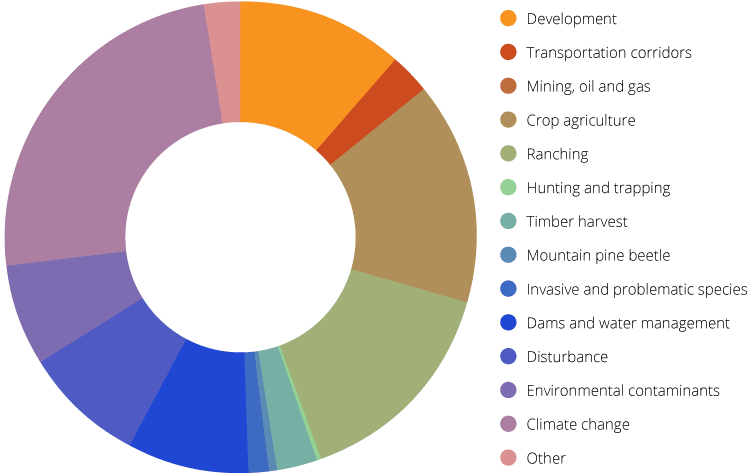Riparian Habitat
Riparian areas occur wherever the presence of water influences the vegetation, making it distinct from upland vegetation. Riparian areas occur around lakes and wetlands and along streams and rivers. Riparian areas exist in all parts of the Canadian Intermountain, from low-elevation floodplains to high mountain streams, through grasslands and dry forest landscapes to moist coniferous and cold subalpine forests.
Although riparian areas account for only a very small proportion of the landmass, they support disproportionately high use by birds, particularly in arid regions. A number of species are highly dependent on these habitats, and many more use riparian areas for nesting, foraging and migratory corridors.
Riparian areas have suffered a great deal of historic losses to various forms of development. For example, in the Okanagan Valley, 50% to 90% of some riparian communities have been lost, and many of these pressures continue today.
Priority Species *
Barrow’s Goldeneye, Black-billed Magpie, Bufflehead, Calliope Hummingbird, Hooded Merganser, Lazuli Bunting, Lewis’ Woodpecker, Long-eared Owl, MacGillivray’s Warbler, Rufous Hummingbird, Vaux’s Swift, Western Screech-Owl, Willow Flycatcher, Yellow Warbler, Yellow-breasted Chat.
* Priority species have been adapted from those identified in Environment Canada’s Bird Conservation Strategies for the region (Environment Canada 2013a,b). Species assessed by COSEWIC as Special Concern, Threatened or Endangered are in bold.
Threats to Riparian Habitat
- Fragmentation and development by human activity.
- Riparian areas are also vulnerable to degradation from poor livestock grazing practices; riparian areas in dryer zones such as grasslands and dry woodlands are particularly at risk.
- A number of cavity-nesting riparian species are threatened by loss of forested riparian habitat due to commercial and personal timber harvest.
- Altered natural hydrology due to climate change and human water management.
Relative impact of threats facing priority riparian birds in the CIJV1
[1] Threat data adapted from Environment Canada 2013a,b.
CONTACT US
Andrew Huang
CIJV Coordinator
andrew.huang@canada.ca




















